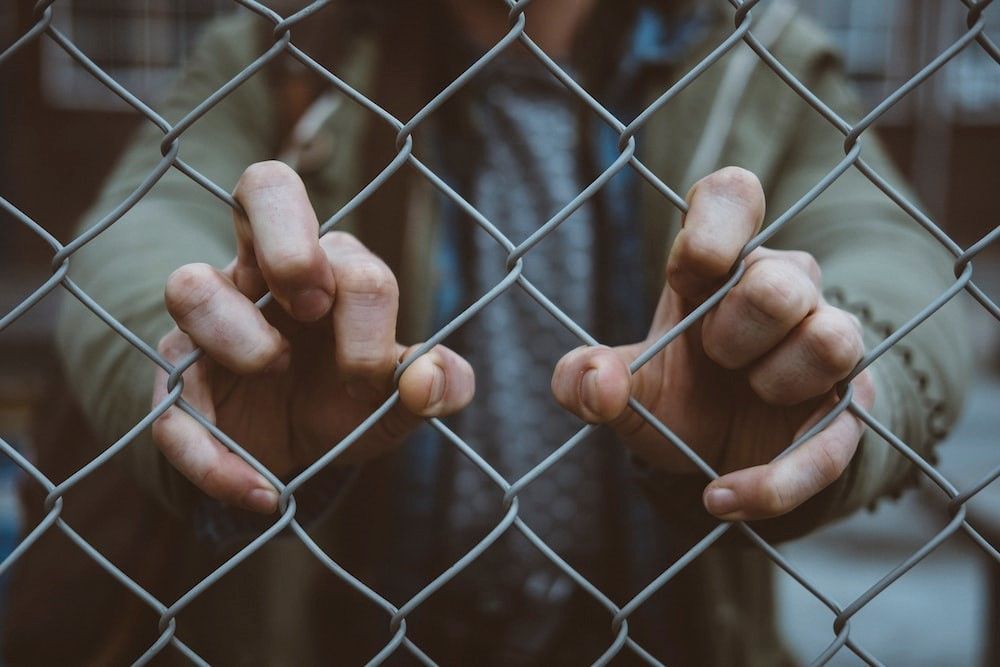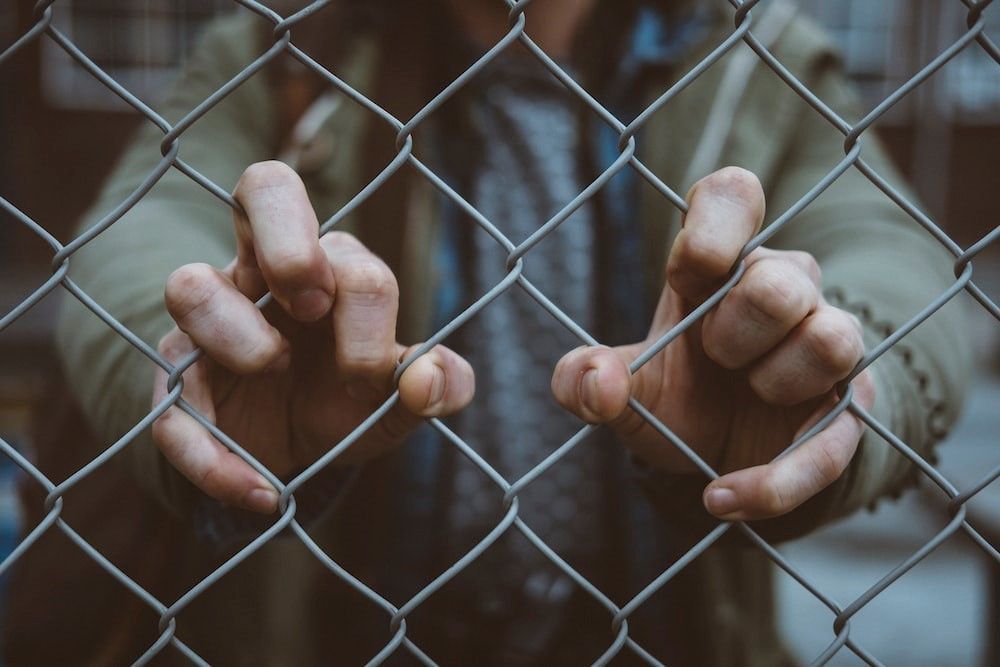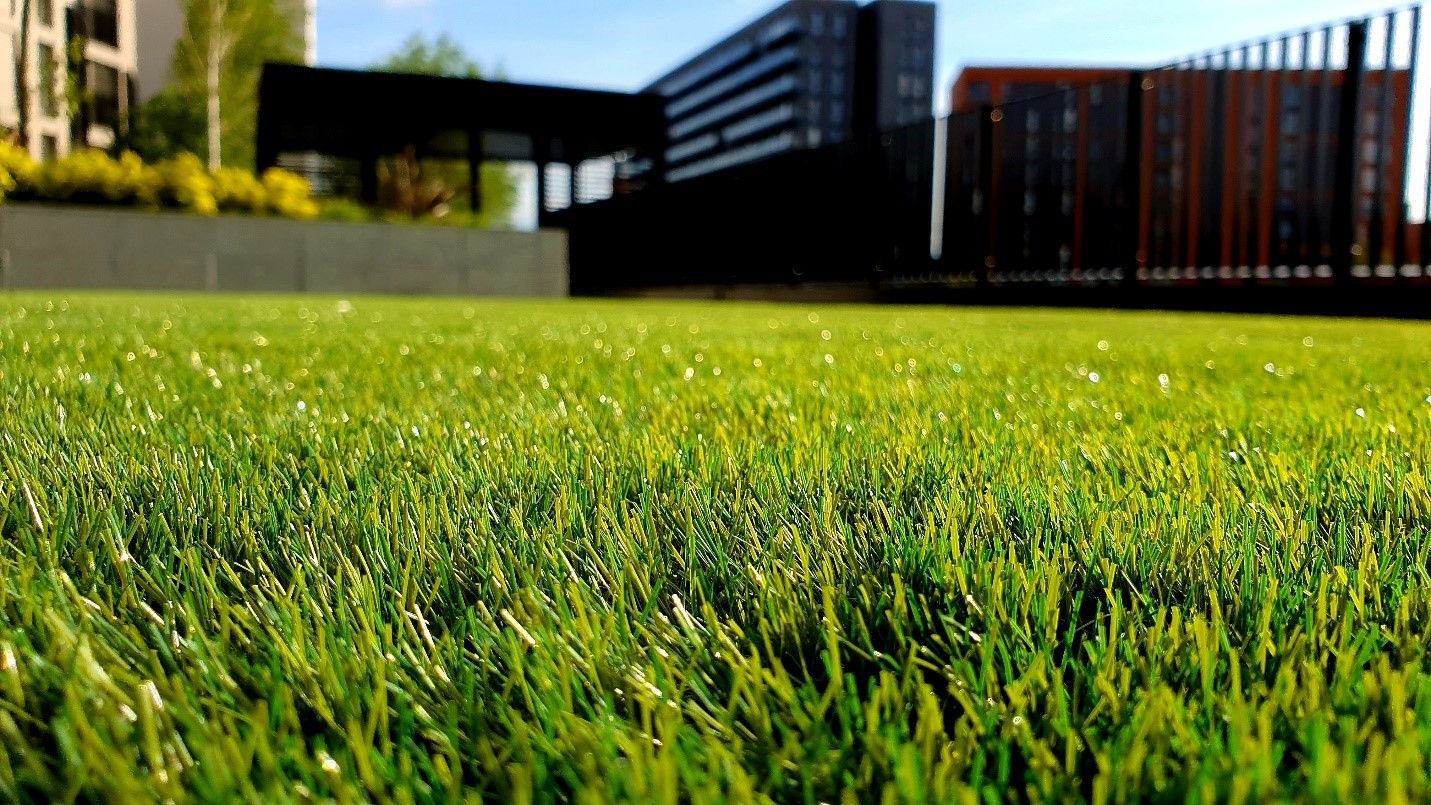The Beacon Blog: Consider It Briefed
Out of the Melting Pot and Into the Polluted Cage: ICE Detention Centers are Exposing Immigrants to Toxins
By Chase Ford, Staff Editor for the Vermont Journal of Environmental Law
April 7, 2023

The journey of an immigrant is a story of resilience, hope, fear, and survival. Unfortunately, too often, the villain of those stories is the United States immigration system. Despite referring to our society as a “melting pot,” our government and society have long resisted and feared immigrants. (1) This paradox has persisted and thrived, especially over the last decade. President Trump separated children from their families at the border and implemented Title 42, a policy that used the emergency of the pandemic to expeditiously send asylum seekers back to their home country or the country they were last in. (2) In February, the Biden Administration proposed a harsh replacement for the Title 42 policy, set to end in May, that radically limits asylum at the border. (3) The government continues to crack down on illegal immigration, arresting and removing noncitizens who violate U.S. immigration laws.
In the mix of complicated immigration policies and cruel treatment from Immigration and Customs Enforcement (ICE) officials, immigrants are exposed to toxins and pollution at detention centers while awaiting deportation. Exposure can come internally within the center or externally from surrounding facilities. Regardless of where the exposure comes from, people are trapped within the detention center. Not only does the system degrade an immigrant’s sense of humanity, but it also poisons them. Reports from three detention centers highlight this environmental entrapment:
Karnes County Residential Center is a privately operated immigrant detention center for families seeking asylum in the United States located in Karnes City, Texas. (4) Within 100 feet of the facility are gas flares and pumpjack oil wells. (5) These fracking emissions are harmful to human health and especially hazardous to vulnerable populations, including children, newborns, and pregnant woman at the detention center. (6) A 2017 Earthworks report found an excess of benzene, hydrogen sulfide, cyclohexane, naphthalene, n-hexane, and xylenes in the area. (7) These chemicals cause respiratory illness, neurological problems, developmental damage, cancer, and sometimes death. (8) On top of the environmental exposures, immigrants at the facility have filed numerous mistreatment claims, including allegations that officers sexually assaulted women, denied medical care to children, and that people were “treated like animals.” (9)
The Northwest CE Processing Center, located in Tacoma, Washington, is operated by the private GEO Group. (10) The center sits adjacent to a federal Superfund cleanup site where a coal gasification plant released toxic sludge into the soil for over three decades. (11) Today, the site is still dotted with drainage ditches, retention ponds, and a capped waste pile. (12) The EPA Superfund contaminant list shows the soil, sediment, surface water, groundwater, and air supplies to be polluted with 27 different compounds. (13) These compounds can cause skin irritation, respiratory infections, developmental effects, cancers, organ failure, and sometimes death. (14) Additionally, the building is constructed on a low-lying floodplain on top of loose soils prone to liquifying during earthquakes. (15) If an earthquake were to hit, the GEO Group would have less than eight minutes to evacuate over 1,500 immigrants, and their safety plans have never been released to the public. (16) More recently, in February 2023, GEO guards used chemical agents following a physical conflict about conditions at the facility, including the food served to immigrants. (17) Chemical agents, like tear gas, can cause blindness, glaucoma, respiratory failure, and chemical burns to the throat and lungs. (18) As of the date of this article, the Washington State Attorney General is investigating the incident. (19)
In 2022, nine individuals filed a complaint against the privately-owned Imperial Regional Detention Facility in Calexico, California. (20) The complaint alleged civil and human rights violations, including toxic and unfiltered air, contaminated water, and exposure to dust and mold. (21) According to the complaint, immigrants detained at Imperial experience difficulty breathing and suffer from headaches and gastrointestinal pains. (22) The facility’s nonfunctional air ventilation system is the primary cause of these issues. (23) This is not the first time immigrants in the facility have called out the Imperial facility for its unsafe practices. In 2020, the Office of the Inspector General for the Department of Homeland Security ordered ICE to address conditions at the facility, including “mold, rust, and peeling paint in showers in detainee housing areas.” (24) ICE claims to have addressed the issues, but as the 2022 complaint highlights, that is not the case. (25) Immigrants in the facility claimed that the mold was covered in paint and reappeared. They also shared their experiences with skin problems, hives, and vision issues that they believe stem from contaminated water at the facility. (26) Advocates should continue to follow the status of this complaint.
Sadly, these are just three examples of the toxic conditions ICE subjects immigrants to. Every facility has unique challenges, whether it is its location, the condition of the center, or the actions of enforcement officers. A common message exists though: private parties working under ICE’s authority must be held accountable for their actions. The U.S. immigration system equates anti-immigration policies with anti-humanitarian policies. It bears repeating this philosophy is not only dehumanizing immigrants but also poisoning them. We need to stop removing immigrants from the “melting pot” and locking them in polluted cages.
Citations
- William Booth, One Nation, Indivisible: Is It History?, THE WASH. POST (Feb. 22, 1998), https://www.washingtonpost.com/wp-srv/national/longterm/meltingpot/melt0222.htm.
- Isaac Chotiner, Are Biden’s Immigration Policies Stuck in the Trump Era?, THE NEW YORKER (Mar. 2, 2023), https://www.newyorker.com/news/q-and-a/are-bidens-immigration-policies-stuck-in-the-trump-era.
- Id.
- Jeremy Deaton & Owen Agnew, Texas Immigrant Detention Center Stifled by Pollution, NEXUS MEDIA (Sept. 7, 2018), https://nexusmedianews.com/texas-immigrant-detention-center-marred-by-pollution-video-bc936076a97/.
- Id.
- Id.
- Jasmine Vazin, Toxic Detention: The Trend of Contamination in the American Immigration System, THE GLOB. ENV’T JUST. PROJECT 10 (Jan. 2019), https://gejp.es.ucsb.edu/sites/secure.lsit.ucsb.edu.envs.d7_gejp-2/files/sitefiles/publication/GEJP%20Special%20Report%202019.pdf.
- Id.
- Deaton & Agnew, supra note 4.
- Candice Bernd, Climate Refugees in Toxic Immigrant Jails Are Victims of Environmental Racism, TRUTHOUT (July 30, 2017), https://truthout.org/articles/climate-refugees-in-toxic-immigrant-jails-are-victims-of-environmental-racism/.
- Id.
- Id.
- Vazin, supra note 7, at 13.
- Id.
- Id.
- Id.
- Alexis Krell, How are chemical agents used at the immigration detention center on the Tacoma Tideflats?, THE NEWS TRIB. (Feb. 17, 2023), https://www.thenewstribune.com/news/local/article272276968.html.
- Facts About Riot Control Agents, Center for Disease Control and Prevention (Apr. 4, 2018), https://emergency.cdc.gov/agent/riotcontrol/factsheet.asp#:~:text=People%20exposed%20to%20riot%20control,%2C%20irritation%2C%20difficulty%20swallowing%2C%20drooling.
- Krell, supra note 17.
- Alejandro Dávila Fragoso, Facing noxious air and contaminated water, immigrants detained in Imperial ICE prison lodge new federal complaint, EARTHJUSTICE (Jan. 24, 2022), https://earthjustice.org/press/2022/facing-noxious-air-and-contaminated-water-immigrants-detained-in-imperial-ice-prison-lodge-new-federal-complaint.
- Id.
- Id.
- Id.
- Kate Morrissey, Immigration detainees say there’s contaminated air, water at Imperial Regional Detention Facility, THE SAN DIEGO UNION-TRIB. (Jan. 28, 2022), https://www.sandiegouniontribune.com/news/immigration/story/2022-01-28/contaminated-air-water-imperial-regional-detention.
- Id.
- Id.













